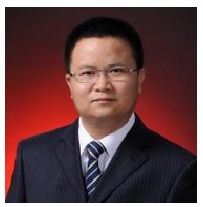High Temperature Dispersed Particle Radiation Physical Properties and Temperature Measurement
A special issue of Materials (ISSN 1996-1944). This special issue belongs to the section "Materials Physics".
Deadline for manuscript submissions: 20 July 2024 | Viewed by 856
Special Issue Editors
Interests: metamaterials; semi-transparent materials; measurement technology; thermal properties of materials; radiative heat transfer; inverse problem; optimization
Special Issues, Collections and Topics in MDPI journals
Interests: radiative heat transfer; inverse problem; optimization; heat and mass transfer
Special Issues, Collections and Topics in MDPI journals
Special Issue Information
Dear Colleagues,
In metal smelting, petrochemicals, aerospace, and atmospheric science, there are many complex dispersed substances composed of gases, liquids, solid particles, and mixtures. Measuring key parameters, such as dispersed particles' radiation characteristics and temperature distribution, is essential for various industries. The on-site high-temperature thermal test process is of great significance. The online monitoring mode of high-temperature dispersed particle radiation characteristics and temperature fields is limited by extreme environments, and its real-time accuracy still needs further improvement. The non-contact measurement method obtains the target parameters by reconstructing other boundary information. However, the multi-peak function solution problem caused by the joint inversion of multi-parameter groups faces considerable computational efficiency and complexity challenges.
This Special Issue aims to promote the progress and development of physical information measurement of high-temperature dispersed particles from the aspects of mechanism research and experimental technology and encourage researchers to publish their original research and innovative discoveries on the optimization calculation method of complex functions or extreme environment measurement technology when obtaining the radiation characteristics and temperature distribution of high temperature dispersed particles. Suitable topics include, but are not limited to, the following:
- Numerical calculation method of high temperature dispersed particle radiation characteristics and temperature measurement;
- Equipment design and experimental technology for online detection of physical properties of dispersed particles in high-temperature environments;
- Research on the identification of multiple types and parameters of high-temperature dispersed particles;
- High temperature dispersed particle spectral analysis and image processing.
Prof. Dr. Hong Qi
Dr. Yatao Ren
Guest Editors
Manuscript Submission Information
Manuscripts should be submitted online at www.mdpi.com by registering and logging in to this website. Once you are registered, click here to go to the submission form. Manuscripts can be submitted until the deadline. All submissions that pass pre-check are peer-reviewed. Accepted papers will be published continuously in the journal (as soon as accepted) and will be listed together on the special issue website. Research articles, review articles as well as short communications are invited. For planned papers, a title and short abstract (about 100 words) can be sent to the Editorial Office for announcement on this website.
Submitted manuscripts should not have been published previously, nor be under consideration for publication elsewhere (except conference proceedings papers). All manuscripts are thoroughly refereed through a single-blind peer-review process. A guide for authors and other relevant information for submission of manuscripts is available on the Instructions for Authors page. Materials is an international peer-reviewed open access semimonthly journal published by MDPI.
Please visit the Instructions for Authors page before submitting a manuscript. The Article Processing Charge (APC) for publication in this open access journal is 2600 CHF (Swiss Francs). Submitted papers should be well formatted and use good English. Authors may use MDPI's English editing service prior to publication or during author revisions.
Keywords
- high temperature dispersion particles
- particle radiation characteristics
- radiation measurement
- particle thermometry
- spectral analysis
- inverse problem
- image processing







